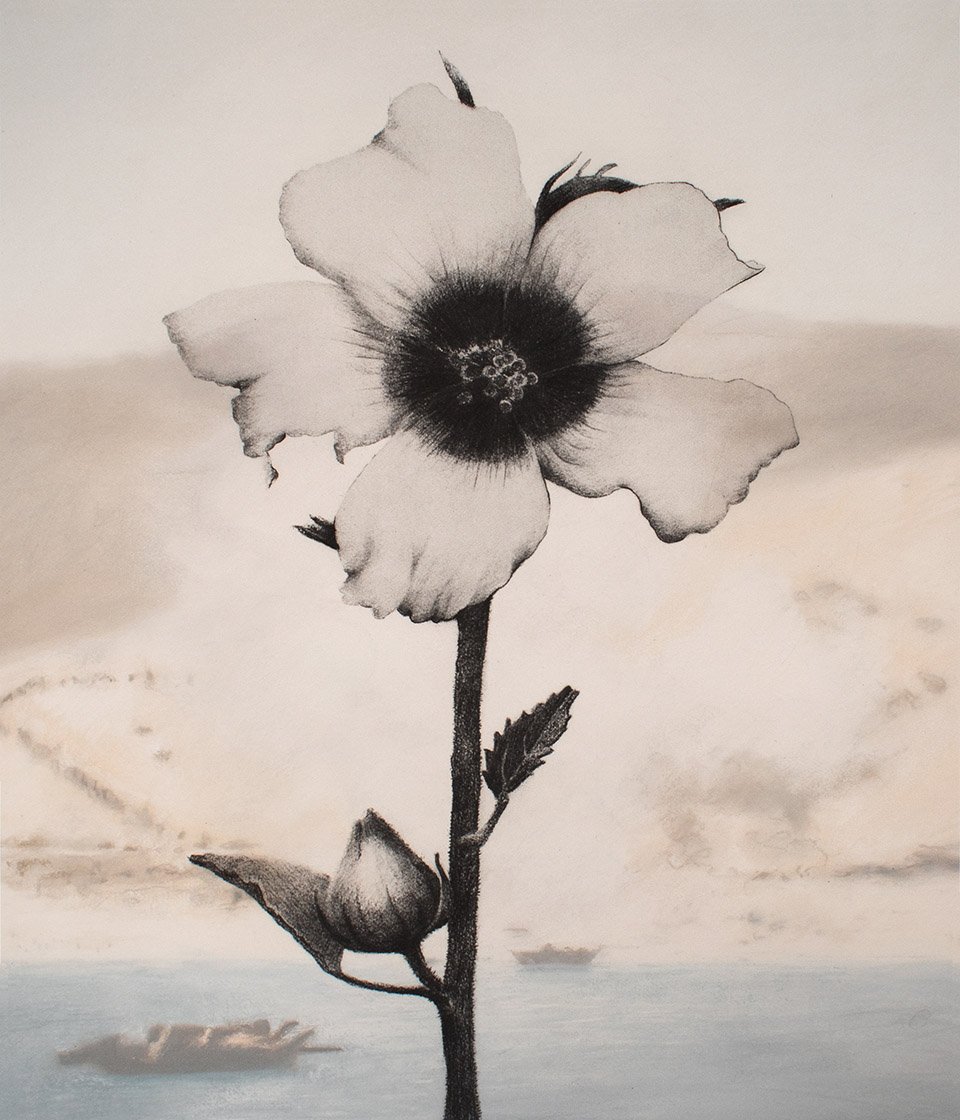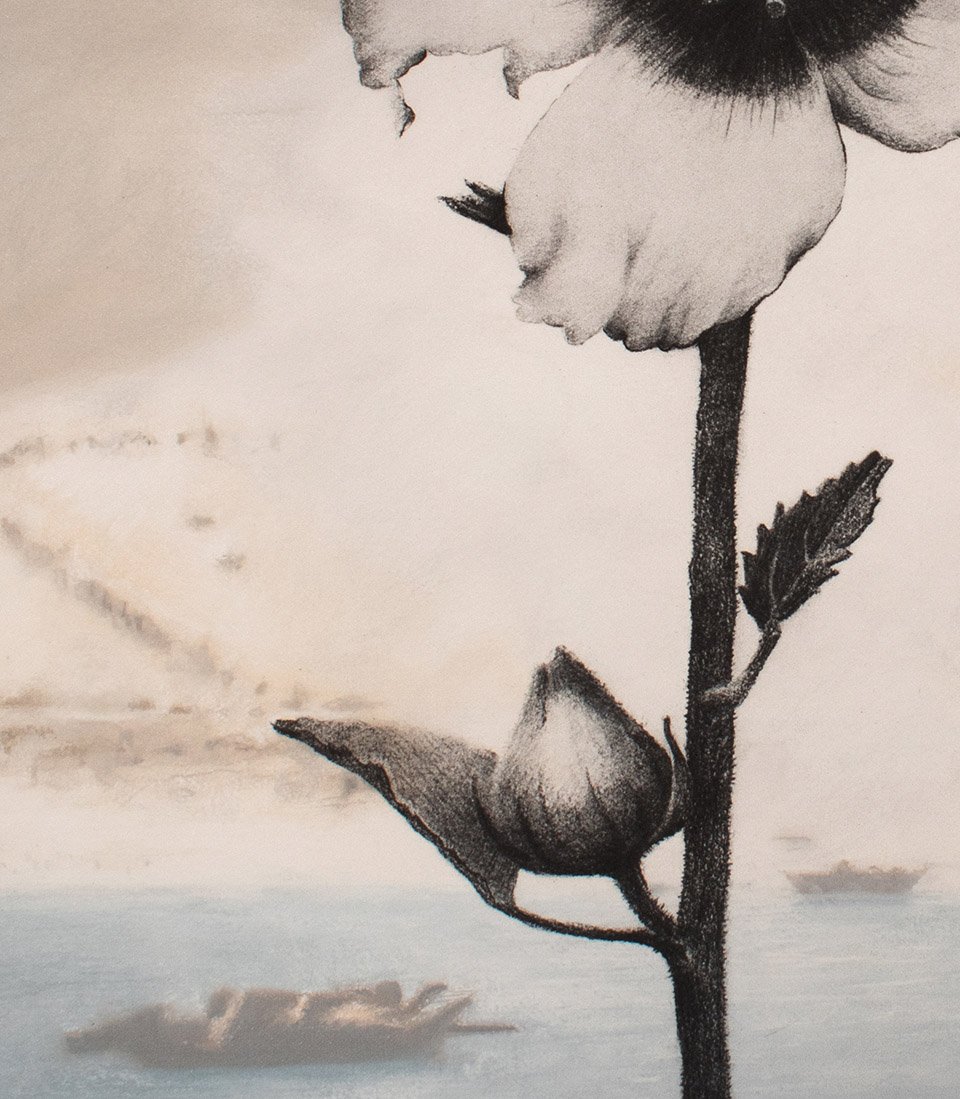Christine Johnson
Christine Johnson
For Frank Cahir, Hibiscus diversifolia 2019
solar plate engraving and archival pigment print;
edition 3/5
Courtesy of the artist
Artist statement:
The perishable nature of flowers is a metaphor for the fleeting nature of life.
I have chosen a single wildflower to represent each of the five young men of the College of Pharmacy whose promising lives were cut short by World War I. Only through recounting and remembering each of their stories can we contemplate the tragedy of their untimely deaths.
For Frank Cahir, Hibiscus diversifolia
The native hibiscus thrives in swampy ground. It has delicate pale-yellow petals and a deep crimson heart.
Frank Cahir served in the field ambulance. He survived Gallipoli and endured the muddy horrors of the Western Front and was recognised for his service.
‘In the weeks of arduous trench warfare he set an example of endurance, cheerfulness and soldierly qualities that stimulated all ranks.’
Frank returned to the battlefields after the war to help exhume and identify the fallen, only to return home after the war, unable to recover from the trauma of it all. Described by his wife Mabel as ‘the loveliest man ever born’ tragically, in May 1928, Frank took his own life.



